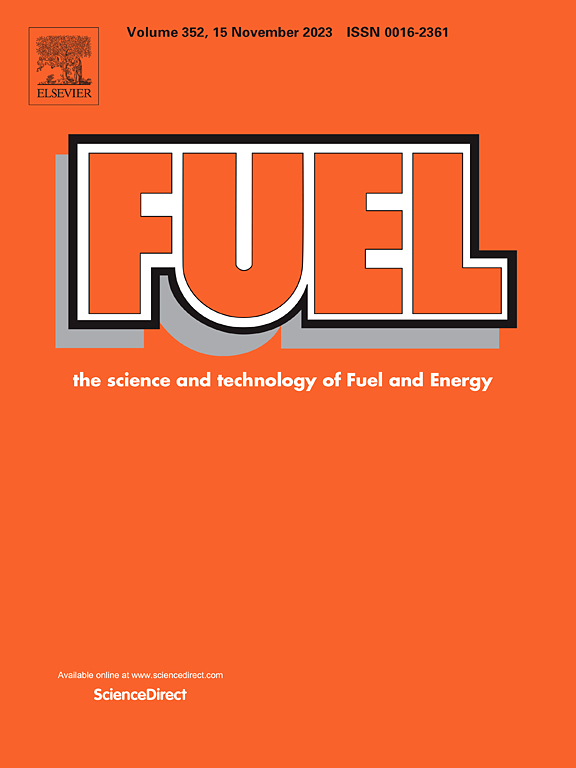用大涡模拟和表格化学方法对氩氧环境高压直接注氢的参数化研究
IF 6.7
1区 工程技术
Q2 ENERGY & FUELS
引用次数: 0
摘要
在全球去碳化的背景下,氢在向低碳活动的过渡中发挥着重要作用。特别是,氩气动力循环(APC)是一种发动机概念,它在闭环配置中循环氩气,只燃烧氢和氧,从而实现零排放系统。目前的工作旨在为这种高压直喷(hdi - h2)发动机的准确和经济建模提供第一步。利用大涡模拟(LES)技术,结合一种新的制表化学方法(HR-FGM),模拟了氩气-氧气气氛中高压下的多次氢气注入。更详细地,对发动机相关参数(喷射压力、喷嘴直径、环境压力、环境温度和环境氧气水平)进行了参数化研究,并从点火延迟、火焰动力学和放热率等方面进行了分析。相应的结果为APC燃烧过程及其建模提供了有价值的见解。特别是,发现:(a)点火延迟对环境温度非常敏感,而对其他所研究的参数不敏感;(b)总放热随喷射压力和喷嘴直径的增加而增加(并且在较小程度上随环境氧浓度的增加而增加),但瞬时燃料转化为热量的比例随喷嘴直径和喷射压力的增加而减少;(c) OH浓度可能不是自动点燃氢火焰质量燃烧速率的良好指标。本文章由计算机程序翻译,如有差异,请以英文原文为准。
A parametric study of high-pressure direct injections of hydrogen in an argon–oxygen environment by using large-eddy simulation and tabulated chemistry
Within the context of a global de-carbonization, hydrogen plays a significant role in the transition to low-carbon activities. In particular, the Argon Power Cycle (APC) is an engine concept that circulates argon in a closed-loop configuration, burning only hydrogen and oxygen and thus rendering a zero-emissions system. The work at hand aims to provide a first step towards accurate and affordable modelling of such an engine in the high-pressure direct-injection (HPDI-H2) configuration. Using the large-eddy simulation (LES) technique, coupled with a novel tabulated chemistry approach (HR-FGM), several injections of hydrogen at high pressure in an argon–oxygen atmosphere are simulated. More in detail, parametric studies on relevant engine parameters (injection pressure, nozzle diameter, ambient pressure, ambient temperature and ambient oxygen level) are carried out and analysed in terms of ignition delay, flame dynamics and heat release rate. The corresponding results represent valuable insights into the APC combustion process and its modelling. In particular, it is found that: (a) the ignition delay is strongly sensitive to the ambient temperature, but not to the other investigated parameters, (b) the total heat release increases with the injection pressure and the nozzle diameter (and, to a lesser extent, with the ambient oxygen concentration), but the instantaneous fraction of fuel that is converted into heat decreases with increasing nozzle diameter and decreasing injection pressure, (c) OH concentration might not be a good indicator of the mass burning rate in auto-igniting hydrogen flames.
求助全文
通过发布文献求助,成功后即可免费获取论文全文。
去求助
来源期刊

Fuel
工程技术-工程:化工
CiteScore
12.80
自引率
20.30%
发文量
3506
审稿时长
64 days
期刊介绍:
The exploration of energy sources remains a critical matter of study. For the past nine decades, fuel has consistently held the forefront in primary research efforts within the field of energy science. This area of investigation encompasses a wide range of subjects, with a particular emphasis on emerging concerns like environmental factors and pollution.
 求助内容:
求助内容: 应助结果提醒方式:
应助结果提醒方式:


